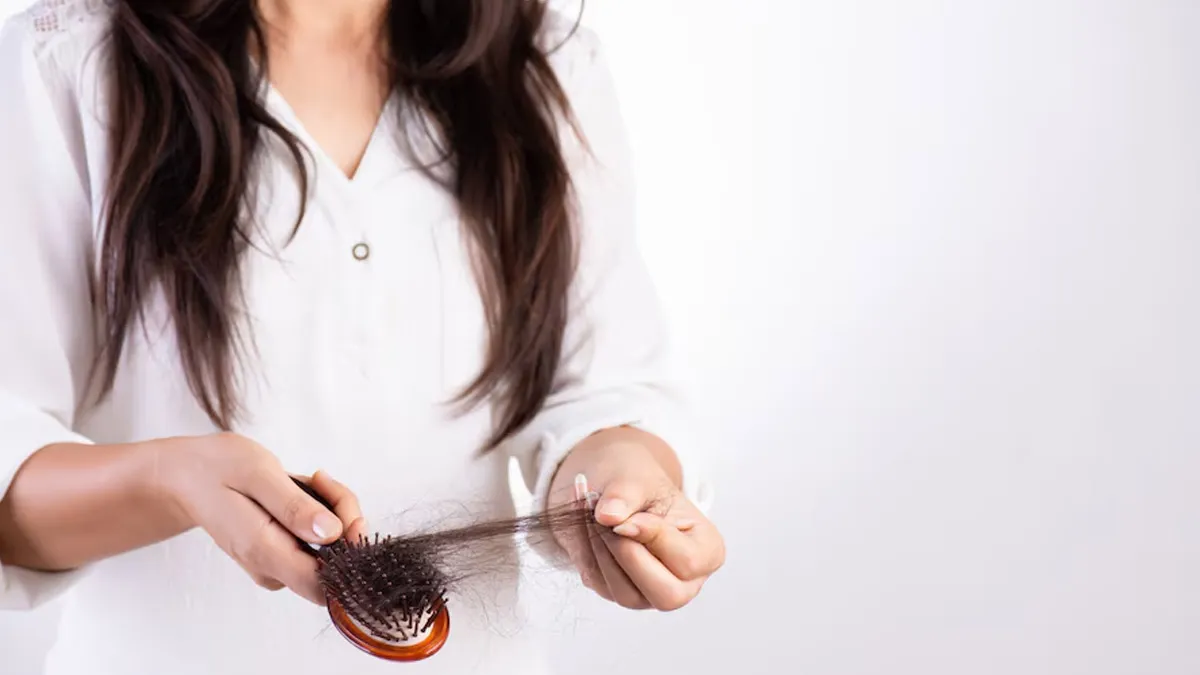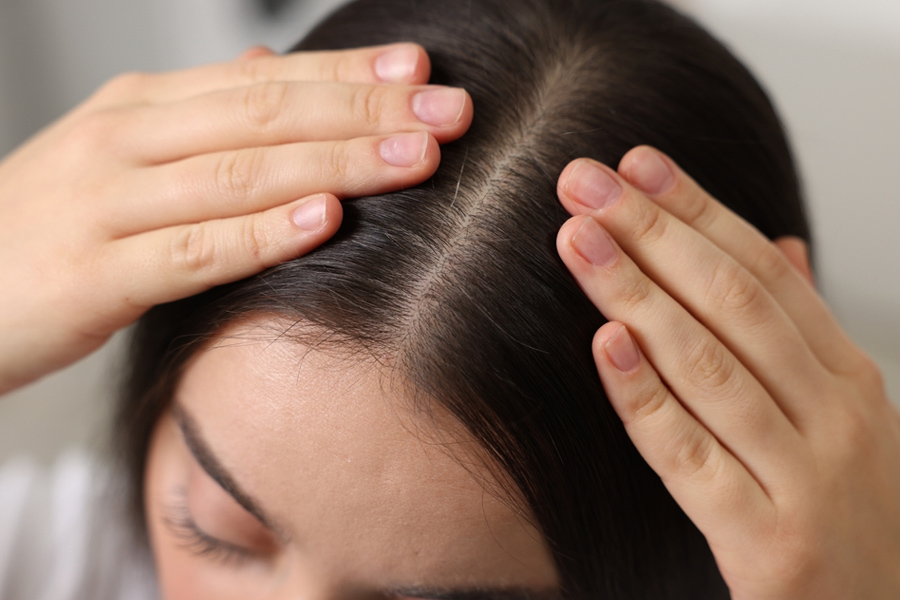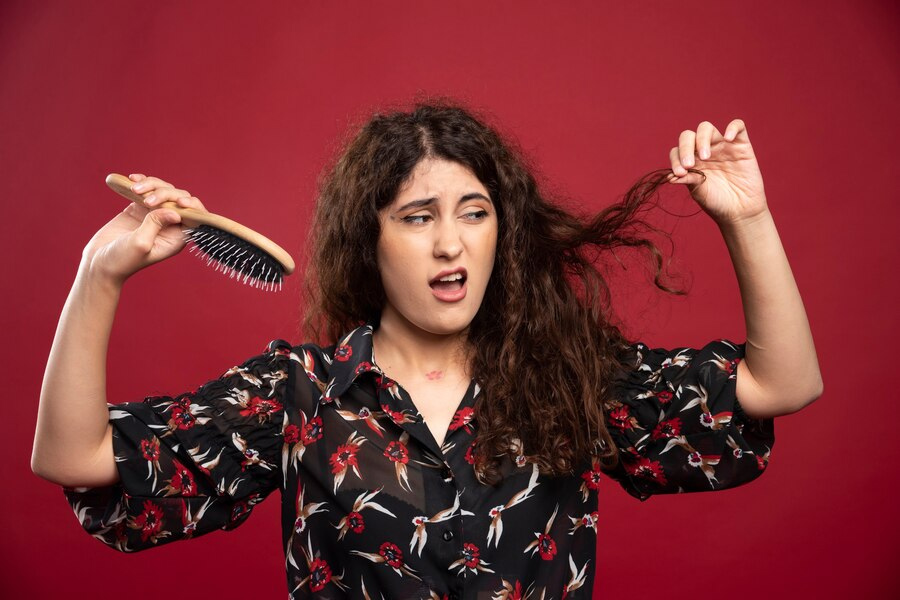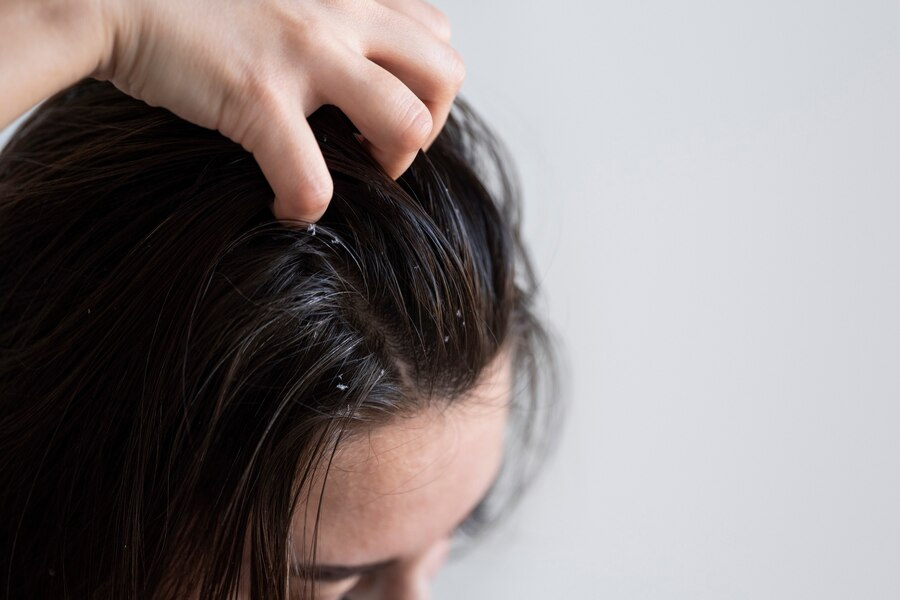
Is your hair loss leaving you frustrated every time you pick up your brush? Hair fall can be frustrating, and when regular products fail to bring results, it’s easy to feel discouraged. But here’s a new approach you might not have tried: scalp peels. Just as skincare peels rejuvenate facial skin, scalp peels work to exfoliate the scalp, removing buildup, excess oils, and dead skin cells, creating an ideal environment for healthier hair growth. In this article, we explain how scalp peels could be a game-changer in your hair care routine.
Table of Content:-
Understanding Scalp Peels: What Are They?

Scalp peels are a refreshing treatment that gently exfoliates your scalp, much like the peels we use in skincare. Using mild acids like salicylic, glycolic, or lactic acid, these treatments help dissolve excess oil and dead skin cells that can clog hair follicles and lead to irritation. Scalp peels create a cleaner, healthier environment for hair growth by removing this buildup, potentially addressing some of the root causes of hair loss and helping your hair grow stronger and fuller.
Scalp peels are normally administered in salons by professionals, though some at-home treatments are also available. However, as with any exfoliating treatment, it’s essential to start slow, particularly if you’re new to scalp peels. Consulting a dermatologist or trichologist can provide the right guidance based on your hair and scalp type.
Also Read: Chemotherapy And Hair Loss: What to Expect During Treatment
Why is Scalp Health Essential for Hair Growth?

The scalp is an area that is often overlooked when it comes to healthy hair. Similar to facial skin, the scalp can accumulate dirt, sebum, product residue, and dead skin cells. Over time, this buildup can clog hair follicles, hindering the growth of new hair and the health of existing hair. Additionally, scalp conditions, such as dandruff, excessive oiliness, and inflammation can impede hair growth.
Scalp peels can help by deeply cleansing the scalp and promoting a balanced environment. By removing debris and reducing inflammation, peels ensure that hair follicles remain open, allowing hair strands to grow stronger and healthier.
Benefits of Scalp Peels for Hair Growth
1. Improved Follicle Health

When hair follicles are clogged, hair growth can be stunted, and in some cases, hair loss may worsen. Scalp peels target this buildup directly, freeing the follicles from any obstructions. This clean slate helps to stimulate the growth of stronger, healthier hair strands.
2. Enhanced Blood Circulation
Scalp peels, particularly when paired with a gentle massage, can boost blood circulation in the scalp. More nutrients and oxygen reach the hair follicles when blood flow increases. According to the Journal of Clinical Medicine, enhanced blood flow, direct stimulation of hair follicles, and growth factors help shift hair from the resting (telogen) phase to the active growth (anagen) phase, supporting new hair growth.
3. Balanced Oil Production

Too much oil can leave your hair greasy and heavy, while a dry scalp can lead to flakes and irritation. Scalp peels help maintain the perfect balance, ensuring your scalp isn’t too oily or too dry. By regulating oil production, they create a healthier environment that encourages better hair growth.
Also Read: Dealing With Hair Fall? Add These 7 Nutritious Nuts To Combat This Issue
4. Reduces Dandruff and Flakiness
If you’re struggling with dandruff or scalp irritation, scalp peels can be a game-changer. For instance, salicylic acid has antifungal and anti-inflammatory properties that can help soothe dandruff. By reducing flakes and irritation, scalp peels create a healthier scalp environment, which ultimately promotes better hair growth.
How to Add Scalp Peels into Your Routine
- Choose the Right Peel: The type of scalp peel depends on your hair and scalp type. For an oily scalp, salicylic acid peels are often recommended as they penetrate deeper and help to control sebum. If you have a dry scalp, glycolic acid or lactic acid peels can offer gentle exfoliation without overly drying the skin.
- Limit Frequency: Scalp peels are generally recommended once every two weeks or monthly, depending on your scalp’s needs. Over-exfoliation can cause irritation, so starting with a lower frequency is better to see how your scalp responds.
- Post-Treatment Care: After a scalp peel, avoid heavy styling products, direct sun exposure, and harsh shampoos for at least 48 hours. Opt for a mild, sulfate-free shampoo to maintain the peel's effects and keep the scalp balanced.
- Hydrate and Nourish: Follow up with a nourishing scalp serum or light oil to keep the scalp hydrated. Ingredients like hyaluronic acid, aloe vera, and vitamin E can replenish moisture and further support hair growth.
[Disclaimer: This article contains information for informational purposes only. Hence, we advise you to consult your own professional if you are dealing with any health issues to avoid complications.]
Also watch this video
How we keep this article up to date:
We work with experts and keep a close eye on the latest in health and wellness. Whenever there is a new research or helpful information, we update our articles with accurate and useful advice.
Current Version